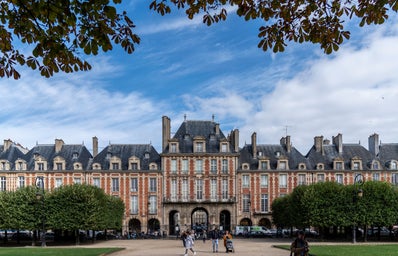Ah, Dark Academia. The hallowed internet aesthetic that grabbed Gen Z’s attention during 2020 lockdowns, when there was nothing better to do than imagining we were somewhere or someone else, allowing students to get through online classes. Since then, it has only grown in popularity: countless TikTok videos, Pinterest mood boards, and Instagram posts feature old university buildings, turtleneck sweaters, classical statues, and library spaces. Dark Academia is the romanticisation of learning, ancient art, and classic literature, while focusing on the darker aspects of the experience. Think The Secret History or Dead Poets Society.
Sounds nice, right? And familiar, too. If you study humanities at St Andrews, an ‘elite’ university steeped in history, you’ve probably attended a lecture in an ancient-looking building in Sallies’ Quad or studied in St Mary’s library amongst high arched ceilings and mysterious-looking books caged in their bookcases. However, when it comes to its’ romanticisation of elitism, like St Andrews, Dark Academia exposes us to its three main problems: race, class, and gender.
Why So White?
With the internet popularity of Dark Academia rising, people started to notice the aesthetic’s inherent lack of diversity, and subsequenlty wondered why many associated with the trend were white. For instance, the two key pieces of culture most lauded by the Dark Academia community, Donna Tartt’s 1992 novel, The Secret History, and the 1989 film Dead Poets Society, do not feature a single person of colour. Whilst you could argue that this is due to the creator’s intention to show the reality of elitist education with its lack of diversity, it still doesn’t explain or justify why Western culture and art are being romanticized in the first place.
In addition to the lack of diversity ranging from characters to internet creators alike, the aesthetic is also notably Eurocentric, placing huge importance on elite universities located solely in the UK and the US such as Harvard, Oxford, or Cambridge. These places may have beautiful library buildings and towering halls, but when we romanticise them, we cannot forget their history. Codrington Library, at All Souls College, Oxford, was named after slave trader Christopher Codrington, and it was constructed using the money he amassed from Barbados sugar plantations. Such buildings were not only built on the back of the brutal slave trade, they are also symbols of the enduring legacy of colonialism.
An Aesthetic for the Rich?
Inevitably, as an aesthetic that takes its inspiration from classical art, literature, and elite education, Dark Academia’s fashion and lifestyle is also inspired by those who can afford to attend a prestigious university or partake in such activities. The aesthetic romanticises the studying the classics, Greek tragedies, Latin poems, ancient plays – in other words, pursuits that were historically confined to almost exclusively upper-class white men, and few upper-class white women who had the necessary money and opportunity.
As such, this raises questions surrounding the accessibility of the Dark Academia lifestyle. Despite its recent widespread popularity allowing for more people to participate in such activities, if you’re someone who has just endured an exhausting ten-hour shift, you probably won’t be in the mood to settle down and read some Ovid at the end of your day.
The Glorification of Traditional Masculinity?
Dark Academia also lacks diversity in terms of gender representation. While the vast majority of TikTok creators who post about this aesthetic are young women, the arts and culture they celebrate was either created by white men (think The Odyssey), or written by women who told the stories of men (think Tartt’s The Secret History). Thus, the male characters featured in Dark Academia stories are usually straight and male, although there are sometimes hints of male homoeroticism i.e. in The Talented Mr Ripley. Additionally, unlike its feminine counterpart, Cottagecore, Dark Academia’s fashion is particularly masculine. While the androgynous pieces, such as tweed blazers, brogues, and corduroy trousers, give women the opportunity to dress in a traditionally masculine way, men partaking in the aesthetic wearing pleated skirts would be look down upon instead.
Conclusion
While on the one hand, Dark Academia can be regarded as commendable aesthetic which has allowed elite cultural pursuits and style to be democratised and made available to everyone via the internet, why should still we romanticise elitism and Eurocentrism on the other? To answer my article’s main question, no, I don’t think that it’s problematic for people to take part in the aesthetic, as it has allowed for traditionally white, upper-class, male activities to be made available beyond the inner academic circle. The democratisation of elitist cultural pursuits is commendable, but Dark Academia’s shadowy colonialist roots raise another question: why do we romanticise certain groups of people in the first place?


